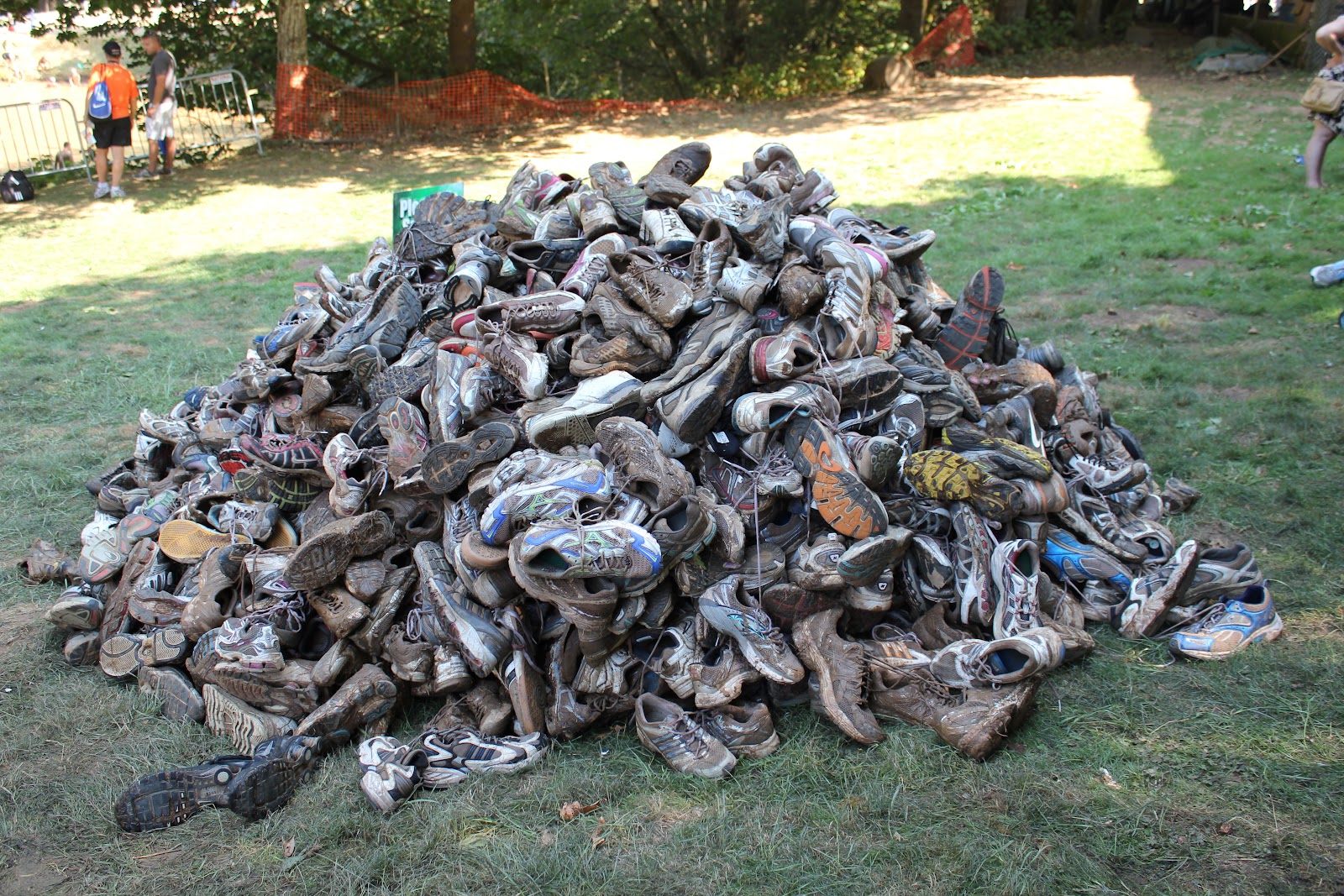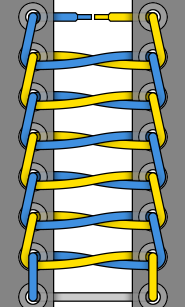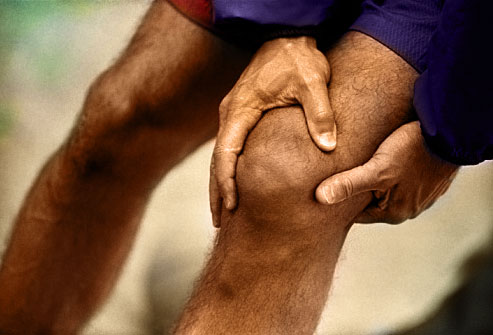1. The Right Running Shoes for the Terrain
Running shoes are expensive! There is no question about that, but, to make matters worse, you may be having to replace them more often than necessary! Shoes are made with different types of rubber on the out-sole. The softness and stickiness of that rubber is designed for a specific type of terrain; harder rubbers are for running on concrete, and soft, sticky rubbers are more for trails.The issue is that using one type of shoe for all your different running can cause the sole to wear out faster than normal.
 |
| Don't wear out your shoes prematurely - get the right ones! |
So, although it might be painful on the wallet to buy multiple pairs of shoes at a time, it will ultimately save you money (and potential face injuries!).
 |
| Ladder Lacing - my preferred system! |
Sometimes shoes just don't fit perfectly when you tie them up. Maybe the toe gets too tight when you cinch the upper section tight, or maybe there's a point where the laces just press in more than you'd like. Changing the way that you lace your shoes is a simple option to fix this!
There are literally hundreds of ways to lace your shoes. Ian's Shoelace Site provides a wide range of options to suit every lacing need. My favorite, by far, is the Ladder Lacing system, having adopted it for my Altra LonePeaks and my Inov8 RoadX 233's. It allows for tightening of specific areas of the foot and does a very good job of maintaining that difference during use. The only downside is that they can take a couple minutes to tighten when you put your shoes on. The Lace Lock idea actually forms the basis of the Ladder Lacing, but can be easily applied to any pair of shoes to keep them tight overall. If you've got a sensitive spot take a look at the Gap Lacing option, it might do the trick for you.
3. Runner's Lube (not what you think... well, sort of)
This is probably one of those topics that will freak some people out, but we really think it should be mentioned here. When running long distances (and sometimes not so long distances) you will be faced with chafing or blisters. Not only are these things uncomfortable, they can be quite dangerous, especially if a blister becomes an open wound!
Both issues are the result of friction between the skin and another surface or body part. And although nothing will replace proper well-fitting gear, using some type of lubricating substance on sensitive areas can make a world of difference! We're not talking that stuff you have hidden away from prying eyes (though Astroglide has been suggested in running forums), we're meaning products that are designed for running/exercise (e.g. Runner's Lube, BodyGlide or Chamois Butt'r). The good old standby, however, is Vaseline and it seems to be one of the most popular options for ultrarunners. Whatever you choose, don't forget to apply it before going running, and again partway through a lengthy run.
4. Variety doesn't just prevent boredom!
 |
| Avoid running injuries by adding variety your routine! |
Just remember, always adopt new running and training techniques slowly. This gives you time to strengthen the potentially weaker parts of your body and not cause injury when you're trying to avoid it. When in doubt, contact a certified trainer, your physiotherapist or your doctor - you know, someone whose job is to tell you what to do!
5. Stretching
Stretching has been at the center of controversy for quite a while. There are researchers, coaches and athletes that either swear by it or against it, but all for different reasons. Here I will present to you a good reason to stretch.
From the most up-to-date literature, and from speaking with a physiotherapist, it appears that normal static stretching doesn't do a whole lot in terms of affecting performance, and it only minimally helps reduce soreness following exercise (we're talking 1% percent - not even really noticeable). However, if someone has tight/short muscles then stretching is recommended. A good example of this is how many people with desk jobs that are hunched over all day have tight pectoral muscles, and the solution to their problem is to stretch! Or alternately, use patello-femoral pain syndrome as an example in which stretching is usually a suggested treatment along with strengthening.
So we know that stretching can help solve problems caused by tight muscles, but wouldn't it make sense that stretching could prevent these sorts of things? The answer is yes it can! Now obviously you don't want to over-stretch as this can cause even greater issues, but holding a gentle stretch for 20-35 seconds won't do any harm! And it may even do some good.
6. Candy, Chips and Running CAN go together!
 |
| Surprisingly not unlike some ultra aid stations! |
You probably already know that your body uses energy when you run. This energy can come from different foods or energy stores and that's determined by your level of exertion and your level of fatigue. At high levels of exertion (eg. sprinting) your body relies primarily on simple sugars to help generate and replenish your energy, but at moderate levels of exertion your body uses a combination of sugars and fats. At low intensity, fat becomes more important, but it isn't the sole source of energy by any means. To top all that off, your body has a store of glycogen that it can use for energy, and this store gets depleted as you exercise at moderate to high intensities. Glycogen depletion will lead to extreme fatigue, and that's clearly not good for your race time!
For long, sustained running events it's necessary to replenish your energy so you don't completely deplete your glycogen stores. The shorter the run the simpler the food should be. For example, when I run for a couple hours I will eat a gel and some Clif shot bloks, but if I'm going for a long one, I'll eat Clif bars as well. Obviously, if you're running an ultra marathon for a full day (or more!) you're going to get tired of only eating gels and bars. That's where the candy and chips come in! Candy provides extremely simple sugars which can be good to get you out of a rut, and the chips are both salty and contain high levels of fat which are good sustained energy. My favourite ultra food has to be cheese quesadillas though! The protein and fat in the cheese, and the carbohydrates in the tortilla make for a well-rounded and tasty snack that will keep you going for miles!
Run far my friends!
-UltraChris
thanks
ReplyDeleteThanks for a wonderful share. Your article has proved your hard work and experience you have got in this field. Brilliant .i love it reading. tenis deporte
ReplyDelete